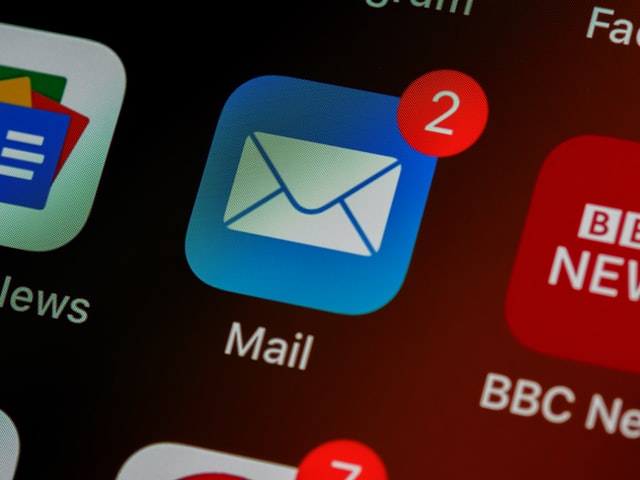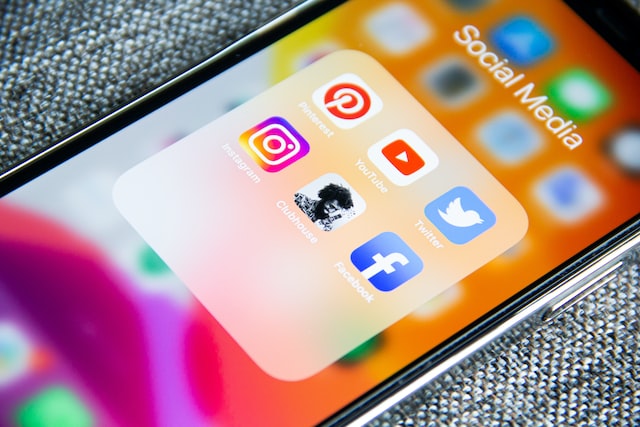
Ultimate Guide: How to Market a Small Business
While starting and running a small business always involve many challenges, arguably, marketing the business to attract new customers and retain existing ones is one of the most challenging aspects.
Most small businesses tend to deal with limited capital, and marketing is expensive. Especially in the earlier stages of running a small business, marketing may include a lot of trial and error (which means additional costs), and if you are not careful, it can hurt the small business’s profitability and its ability to grow.
Yet, that’s not to say marketing a small business is impossible.
With the right strategies, small businesses can definitely improve how they generate leads, attract and nurture them, and convert them into paying customers. Not only that, but with the right tools and techniques, you’ll also be able to calculate your marketing’s return on investment (ROI) and evaluate how your marketing budget is used.

In this guide to small business marketing, we’ll discuss all you need to know about developing and executing a marketing strategy for small businesses.
By the end of this article, you’d have learned about the following:
- The concept of small business marketing
- Tools and technology you can leverage in marketing your small business
- An overview of different marketing channels you can leverage in promoting your small business
- Mistakes to avoid when marketing a small business
- Marketing best practices for small business
And more.
Without further ado, let us begin this guide from the basics.
Marketing for Small Business: The Concept
Marketing, simply put, is an effort—often in the form of a systematic process—of getting a business’s products or services in front of its potential customers.

The end goal of the marketing effort is to get these potential customers to make a purchase (turning them into actual customers or clients.) An ideal marketing scenario is when a random person stumbles upon an advertisement of your product, becomes interested, and makes their purchase right away.
In reality, however, the marketing process is rarely that simple and can involve several different phases:
- Awareness: someone becomes aware of a brand and a product or service. At this phase, a random person becomes a prospect.
- Lead generation: this someone expresses their interest in the product/service and divulges their contact information so they can learn more about the product/service. The prospect is converted into a lead.
- Nurturing: the brand nurtures the lead until they are ready to make their purchase. Feeding information, educating them about the product/service’s benefits, and more.
- Conversion: the lead finally makes a purchase and is converted into a paying customer.
There are a wide variety of marketing channels and methods (both paid and free/organic) you can use in each of these phases; each may be more effective in catering to different types of audiences in different situations.
For small businesses, this idea of marketing remains the same, but there are also challenges and concerns unique to marketing these small businesses.
Small Business Marketing: Key Challenges to Consider
While the definition of “small” in a small business can vary depending on the location and/or industry the business is in (i.e., the U.S. Small Business Administration has a different set of standards for different industries.), small businesses tend to have smaller capital and fewer human resources than “regular” businesses.

Meaning, that quite often, small businesses struggle with a limited marketing budget, so they’ll need to be more creative in designing their marketing campaigns and initiatives.
With industries becoming more competitive and saturated, this limited budget, resources, and also time can produce other challenges and concerns, namely:
1. Generating qualified leads
While outbound lead generation is often a major challenge for any business, the difficulty can be amplified due to the limited resources of small businesses. This is especially true for small businesses in highly competitive industries where winning prospective customers’ attention can be very difficult. On the other side of the spectrum, in industries with very small markets, generating qualified leads can also pose a major challenge.
2. Content production and distribution
It’s no secret that content is king in today’s marketing.
Yet, with the limited budget and manpower, small businesses would often struggle with the production and distribution of high-quality content.
3. Maintaining consistency in executing marketing activities
In many marketing activities, consistency is key.
Many marketing campaigns will only generate results after a long-term, consistent execution, which will translate into higher capital and manpower requirements. Many small businesses would find consistent execution of these marketing activities very challenging to achieve.
4. Keeping up with the latest trends
To stay competitive and relevant, businesses would need to keep up with the latest marketing trends and technology solutions. This can be very difficult to do in practice, not only due to the limited budget but also limited manpower and time.
5. Choosing the right outsourcing providers
A potential solution to tackle this issue of limited resources and time is to outsource the marketing activities to external vendors (i.e., a marketing agency.) However, knowing which vendor to trust can be very challenging in practice, and outsourcing the marketing activities to the wrong vendor can be counterproductive.
Marketing Your Small Business: Step-by-Step Guide
Step 1: Creating a Marketing Plan
Having a comprehensive marketing plan will help you tackle two main issues in small business marketing:
- Having a clear roadmap/guidelines so you can execute your marketing efforts while maneuvering the resource limitations
- Allowing you to develop and execute more targeted marketing campaigns to cater to your target audience’s needs and preferences
Without a clear marketing plan, you can easily fall into the trap of wasting your time and resources on campaigns and initiatives that might not be a great fit for your small business.

You may look at your competitors and imitate what they are doing, or you may be tempted to try all the newest marketing trends and technologies while they don’t actually fit your business’s current situation or your target audience’s preferences.
Your marketing plan should start by identifying three core foundations: your marketing goals, target audience, and unique value proposition (UVP).
Identify marketing goals
Yes, the end goal of your marketing effort may be to sell more of your products or services but try to be more specific.
Create aligned goals that follow the SMART framework:
- Specific: your goal should be as narrowly focused as possible, and it should be easy to explain this goal to others.
- Measurable: you should be able to define KPIs and monitor metrics to measure your campaigns’ performances against this goal.
- Achievable: defining too big of a goal that is not realistic and attainable can hurt your marketing team’s morale and be counterproductive.
- Relevant: your marketing goal should align well with your business’s overall mission and goals.
- Time-based: you should be able to assign a clear timeline to this goal. Your team should clearly understand when this goal should be achieved.
Identify and understand the target audience
Now that you’ve defined your goals, you’ll need to figure out who your ideal customer is, one that would help you achieve the goal(s) you’ve defined above.
You can:
- Analyze your existing customer base (if any) and gather as much information as you can about them: age, gender, income level, education level, etc.
- Identify and analyze your competitors’ target audience. You can either imitate them and target the same target audience or look elsewhere
- Conduct thorough market research to identify the potential target audience in your area.
There are other approaches you can try to identify your ideal audience, so don’t be afraid of some trial and error.
Once you’ve identified your target audience, the next step is to collect as much information as you can about this specific audience:
- Their demographic data (age, gender, ethnicity, geographical location, etc.)
- How much money do they make
- Their educational level
- What are their specific pain points?
- Their needs and preferences
Develop a buyer persona, and try to be as specific as possible when you define and describe your target audience.
The better you understand whom you are marketing to, the more effective a marketing plan you can develop by tailoring it to their specific needs and pain points
Define your Unique Value Proposition (UVP)
Unique Value Proposition (UVP) is what makes your business unique from your competitors in delivering value to your target audience.
In short, the UVP is a reason why a potential buyer should purchase from you and not your competitors.
Obviously, defining your unique value proposition should be based on a thorough understanding of your target customers. You can’t please everyone, so this UVP is the unique value as perceived by this specific target audience and not the others. This is why, if you have multiple target audiences, you will need to define different UVPs for each of them.

Once you’ve identified what’s perceived as valuable by each target audience group, you should:
- List your product or service’s unique values, key features, and benefits. Define how it stands out among its competition
- When describing your UVPs, focus on clarity. Be straightforward and use specific language to avoid confusion. Unless it’s absolutely needed, avoid using technical jargon. Use plain language your target audience can easily understand to maintain engagement.
- Keep collecting feedback, test your UVPs (i.e., via A/B testing), and continue to fine-tune them. Don’t be afraid to revise your UVP when needed.
Creating an action plan
Based on your identified goals, you can start outlining marketing strategies that will help you achieve your goals while catering to your target audience’s specific needs and preferences.
To tackle the challenge of limited resources, It’s important to always keep track of your resource constraints when weighing between different marketing strategies and campaigns.
Be practical about which channels you can or can’t explore based on these resource constraints while also weighing their respective effectiveness for your target audience.
Step 2: Setting up technology infrastructure
In this digital age, leveraging the right technology solutions can significantly improve the performance of marketing campaigns.
Yet, with all the tools and solutions available at the moment, choosing the right ones for your small business can be a hassle, especially if you are also dealing with a limited budget.
Regardless, here are some of the most beneficial technology solutions and tools you might want to consider investing in:
Market research tools
Proper market research can significantly make or break a small business, and fortunately, there are numerous market research tools available at the moment, with varying price ranges (including free ones) and capabilities.
Some of the popular market research tools you might want to consider are:
- Statista: An aggregation website collecting data (statistics) from various reputable sources, making it easy for us to view and analyze various marketing data. The free version of Statista is already pretty useful, but the premium version ($39/month) offers access to millions of exclusive data.
- Think with Google: Think with Google is Google’s set of tools (Google Trends, Test My Site, Market Finder, etc.) that is available for free. With these tools, you can tap Into Google’s massive data and gain valuable insights into various business aspects to aid you in planning your marketing strategy.
- SurveyMonkey: Starting from $32/month, although the free plan is all ready pretty useful, SurveyMonkey is a powerful tool to assist you in your market research surveys so you can better understand your target audience.
- Ubersuggest: An easy-to-use but powerful tool for content and especially keyword research where you can input a keyword, and it will generate a list of keyword suggestions. Starting from $29/month.
- BrandMentions: A social media monitoring platform that can help you “listen” to your target audience’s conversations, for example, to figure out when people are talking about your product or your social media profiles. Starting from $99/month.
Google Analytics
Technically a market research tool, Google Analytics deserved its own special mention due to its usefulness.
With Google Analytics, you can monitor and analyze all kinds of data related to website visitors, so you can get a better understanding of the website’s performance, website visitors’ demographics data, and more.
Best of all, Google Analytics is totally free, so there’s simply no reason not to make it a part of your marketing technology arsenal.
Marketing campaign solutions
- Email marketing platform: Tools like MailChimp or SendinBlue can help you easily design and manage email marketing campaigns.
- SMS marketing: Various email marketing solutions also offer SMS marketing capabilities, but there are also standalone solutions worth considering if you consider SMS marketing an important part of your overall marketing strategy.
- Social media marketing solution: Consider investing in solutions like HootSuite, Buffer, Mention, and others to assist your social media marketing campaigns.
- Influencer marketing campaign: Tools like Buzzsumo or Pitchbox can help your influencer marketing campaigns, especially in outreaching potential influencers.

Since these technology solutions will most likely be a long-term investment, don’t rush and carefully do your homework when researching different potential solutions you’d like to invest in. Identify your needs, know your budget constraints, and consider your target audience’s preferences before you commit to a solution.
Step 3: Develop a strong branding
Strong branding is a must for any business, but it’s even more important if you are in a competitive and saturated industry.
Your branding is the one differentiating your business from your competitors, helping your target audience remember you and encourage them to make (repeat) purchases from your company.

While branding is a pretty deep subject on its own, here are a few actionable tips on how to create
1. The most important foundation of a strong brand identity is a thorough understanding of your target audience’s preferences, behaviors, values, needs, and pain points. It’s crucial to first perform thorough market research as the basis of your branding initiative.
2. Based on your market research, develop a brand messaging framework that resonates with this specific target audience. Your brand messaging framework should cover four key areas:
- Brand promise: a short statement (one or two sentences) covering what your audience can expect from your brand. Keep it short, to the point, and engaging.
- Brand mission: expand your brand promise statement by describing what your business’s core values are, what you hope to achieve in the short term and long term, as well as how you plan to achieve these goals.
- Positioning: describing the business’s exact offers (products/services), target audience, competitors, and how the business generally fits in the market.
- Brand voice: based on your target audience and market, describe how you are going to communicate with them. What types of tone will work best to communicate with this specific audience (formal, playful, etc.)
3. Define brand story: develop a brand story that covers the origin story of your brand (keep it brief,) what your brand believes in, what pain points your product or service is designed to solve, and how your business solves these problems. Where do you see your business going in the near future and in the long term?
4. Based on the brand messaging framework you’ve developed, develop your brand assets:
- Brand name: make sure it’s easy to pronounce and remember. While you can aim to be trendy and modern, your focus should be to have a memorable brand name.
- Logo: the brand logo should align with the chosen brand name and should also be memorable.
- Color scheme: choose the right color palettes that can support your brand message while also catering to your target audience’s preferences
- Typography: you may want to invest in paid unique fonts that aren’t available for others
- Iconography: how you choose and elaborate images, icons, and symbols before, during, and after the event.
This is non-exhaustive, and there are definitely more potential brand assets you can explore to support your branding. However, these mentioned above are among the most popular and effective, and in most cases, you can develop them as a foundation for other branding assets you might want to develop and integrate in the future.
Regardless, in branding, consistency is key. Your logo should always look the same whenever it is used, and you should maintain a strict policy on how the color palettes should be used. The more frequent and consistent your brand assets appear, the more likely your customers will remember and stick with your brand.
Step 4: Establish a strong online presence
In this digital age, it’s crucial for any business—small businesses included—to establish a strong online presence in at least four key areas:
1. Professional-looking website
With easy-to-use and affordable website builder platforms like Squarespace, Weebly, Wix, or even the free WordPress (that gives you the opportunity to implement Bookeo’s scheduling plugin for WordPress), there’s simply no reason not to have a well-designed and technically-optimized website.
2. 24/7 online booking
Today’s consumers simply expect the convenience and reliability of online booking rather than having to phone a business to book their appointment.

Especially if your small business is service-focused, consider investing in an online booking/appointment solution for small businesses like Bookeo, so you can easily integrate 24/7 online appointment scheduling functionality on your website and social profiles.
3. Social media presence
Pretty self-explanatory, in this social media age, it would only make sense to market your small business on relevant social networks.

Identify the social network(s) your target audience frequents, and develop a comprehensive social media presence while considering organic presence (building your own followers), paid advertising (using options like Instagram Ads or YouTube ads,) and partnering with the right influencer that often covers your industry (influencer marketing.) If you are going to build active social media presence on different platforms, make sure to use a relevant tool to manage all social media in one place.
4. Google Maps SEO
For small businesses targeting local audiences, optimizing your presence on Google Maps so you can rank higher for relevant keywords in your location is very important and can definitely make or break your business’s success.
You can do so by following these simple steps:
- Claim and verify your Google Business listing
- Optimize your listing. Focus on delivering complete and accurate performance for prospective visitors
- Build local citations by listing your business in relevant online directories in your location
- Encourage your customers to leave positive reviews, especially on your Google Maps listing.
Step 5: Map out marketing channels and tactics
Now that you’ve established your marketing foundations and identified your target market, you can start mapping out your marketing channels and tactics.
While there are so many different marketing channels you can explore, here is a high-level breakdown of major channels you should consider:
Content marketing and SEO
In today’s saturated market, content is king.
The idea is to publish valuable, relevant content that will attract your target audience inwards by incorporating SEO practices (i.e., choosing high-volume keywords, link building, etc.)
This way, when they are looking for information or a solution to their problem, your content is there, and they can be aware of your brand. By regularly publishing high-quality content, you can establish credibility and encourage these content consumers to purchase from you.

You can publish your content in various different forms and mediums:
- Articles/blog posts
- Infographics
- eBooks (longer than articles or blog posts)
- White papers (heavily researched content on a particular subject)
- Landing pages. Web pages that are designed to convert visitors to perform a specific action
- Photos
- Videos
- Webinars
- Influencer marketing. Developing promotional content for influencers so they can promote your brand.
Digital marketing channels
- SEO: optimizing your website and its content so they rank high on relevant search queries
- Google Business/Google Maps: very important for small businesses targeting local customers like restaurants, dentists, etc.
- Email marketing: despite the newer marketing channels, email marketing is still very powerful, especially in nurturing prospects until they are ready for a purchase
- Social media marketing: use both paid and organic social media efforts to build awareness and attract your target audience.
- Paid advertising: paid advertising on Google and popular social networks (Instagram, YouTube, Facebook, etc.) can help your small business generate quick results. Keep in mind, however, that they can be very expensive if not managed well. Also, leverage retargeting/remarketing (serving ads to those who have visited your site or have performed certain actions.) to further improve the effectiveness of your online ads.
Offline marketing channels
- Events: from joining local trade shows to hosting your own event; events can be effective in building awareness and establishing relationships.
- Direct mail: physical mail can still be effective for promoting small businesses that target local customers. You can send catalogs, discount coupons, and other promotional materials to attract recipients to visit your business.
Wrapping Up
While there are many ways for small businesses to promote themselves, it’s important to understand your target market and focus your efforts on channels and campaigns that can best reach this target audience.
Do your market research and competitive analysis, and don’t be afraid to experiment with different marketing channels and campaigns.
Ultimately, the better you understand your target audience, the better you can plan and execute an effective marketing campaign for your small business.

